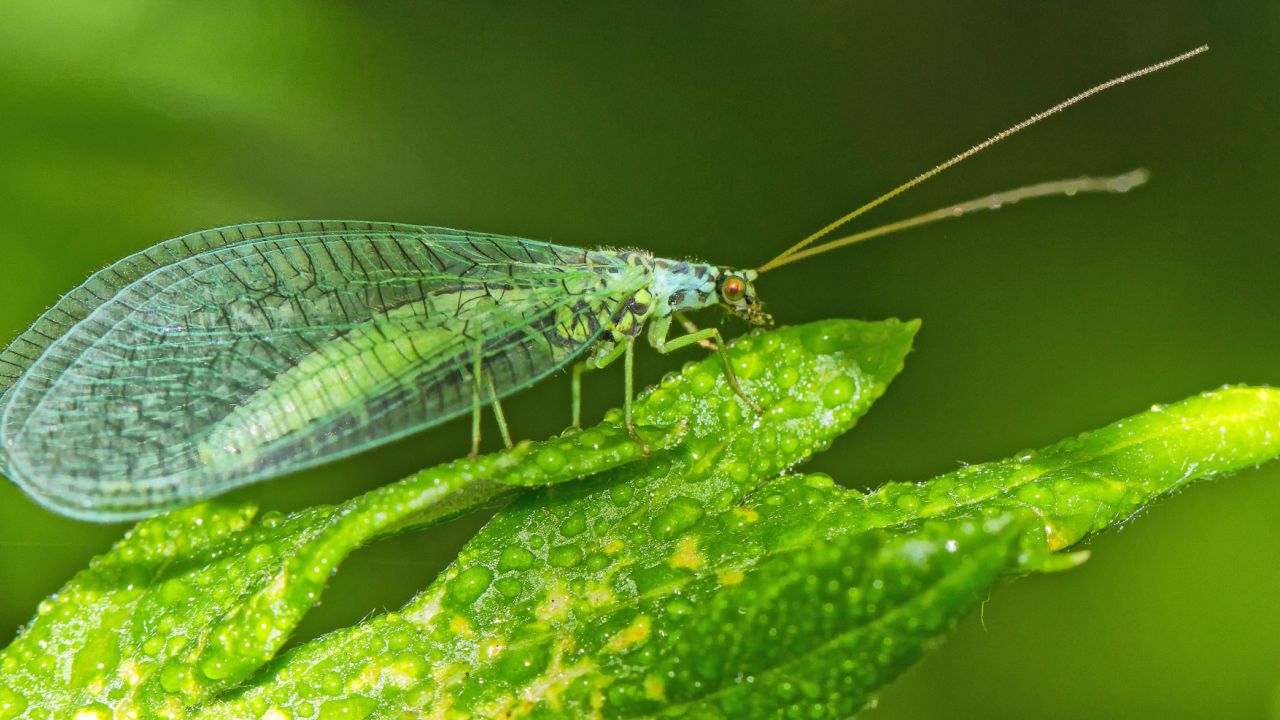
Lacewings are fascinating insects that belong to the family Chrysopidae. These delicate creatures are known for their intricate lace-like wings, which give them their common name. With over 2,000 known species worldwide, lacewings can be found in diverse habitats, ranging from forests and meadows to gardens and even urban areas.
Despite their small size, lacewings play a significant role in ecosystems. They are voracious predators, feeding on a variety of pests such as aphids, spider mites, and whiteflies. This makes them valuable allies to farmers and gardeners, as they help control insect populations naturally without the need for harmful pesticides.
In this article, we will delve into 13 fascinating facts about lacewings, exploring their unique characteristics, life cycle, behavior, and ecological importance. So, let’s dig deeper into the world of lacewings and uncover the secrets behind these enchanting insects!
Key Takeaways:
- Lacewings are small insects with lacy wings, and they help farmers by eating harmful bugs. They also have a cool defense mechanism of releasing a stinky smell when threatened.
- With over 2,000 species worldwide, lacewings are skilled flyers and play a role in pollination. They are beneficial to our environment and have been used as natural pest control agents.
Lacewings belong to the insect order Neuroptera.
Lacewings are small to medium-sized insects that belong to the order Neuroptera. They are known for their delicate, lacy wings that give them their name.
There are over 2,000 species of lacewings worldwide.
These fascinating insects are widely distributed across the globe, with over 2,000 known species. They can be found on every continent except Antarctica.
Lacewings undergo complete metamorphosis.
Like other insects, lacewings go through a complete metamorphosis. They start as eggs, hatch into larvae, undergo pupation, and eventually emerge as adults.
Lacewing larvae are voracious predators.
The larvae of lacewings are often referred to as “aphid lions” due to their appetite for aphids and other small insects. They have sickle-shaped jaws that they use to pierce their prey.
Lacewings are beneficial to farmers and gardeners.
Due to their predatory nature, lacewings are considered beneficial insects in agriculture. They help control pest populations by feeding on aphids, mites, and other harmful insects.
Lacewings have a unique defensive mechanism.
When threatened, some lacewings have the ability to release a foul-smelling odor as a defense mechanism. This odor serves to deter potential predators and give the lacewings a chance to escape.
Lacewings are attracted to light.
Lacewings are often attracted to sources of light, which can be both a nuisance and an advantage. They are known to gather around outdoor lights, which can be used as a monitoring tool for studying their populations.
Lacewings are excellent flyers.
With their intricate wings and strong flight muscles, lacewings are highly skilled flyers. They are capable of precise and agile movements, allowing them to navigate through dense vegetation.
Some lacewings have colorful wings.
While many lacewings have transparent or pale green wings, some species exhibit vibrant colors. These colorful wings serve as a form of camouflage or warning signal, depending on the species.
Lacewings play a role in pollination.
While lacewings are primarily known for their predatory habits, they also contribute to the pollination of certain plant species. They inadvertently transfer pollen as they move between flowers in search of prey.
Lacewings have a long lifespan.
Compared to many other insect species, lacewings have a relatively long lifespan. Some species can live for several months as adults, allowing them to continue their ecological roles for an extended period.
Lacewing eggs are laid on stalks.
Female lacewings deposit their eggs on long, slender stalks. This unique behavior helps protect the eggs from potential predators and provides a suitable environment for their development.
Lacewings have been used as biological control agents.
Due to their predatory nature, some lacewing species have been utilized as natural pest control agents in agricultural settings. Farmers and gardeners often introduce lacewings to control insect populations in a sustainable and eco-friendly manner.
The world of lacewings is truly fascinating. These delicate insects play essential roles in our ecosystems as both predators and pollinators. From their intricate wings to their voracious larvae, lacewings are a testament to the beauty and diversity of the natural world.
So, the next time you spot a lacewing fluttering around or come across a delicate lacewing larvae in your garden, remember these 13 key facts about lacewings and appreciate their remarkable contributions to our environment.
Conclusion
In conclusion, lacewings are fascinating insects that play a crucial role in maintaining balance in our ecosystem. With their delicate appearance and voracious appetite for pests, lacewings are nature’s pest control experts. These beautiful creatures may be small, but they are mighty in their ability to control pest populations and contribute to a healthy environment.Lacewings have evolved unique adaptations that make them effective predators, from their intricate lacy wings that give them their name to their long, slender bodies. Their specialized mouthparts and keen eyesight allow them to spot and capture their prey with incredible precision.Next time you come across a lacewing, take a moment to appreciate their important role in our world. These unsung heroes of the insect world deserve our admiration for their contributions to pest control and the overall health of our environment.
FAQs
Q: What do lacewings eat?
A: Lacewings primarily feed on other insects, especially aphids, mites, and other soft-bodied pests. They have a particular appetite for aphids, which are notorious plant destroyers.
Q: Do lacewings bite humans?
A: No, lacewings do not bite humans. They are harmless to humans and are actually considered beneficial insects due to their predation on pests.
Q: How do lacewings reproduce?
A: Lacewings go through a process called courtship, where males and females engage in complex mating rituals that involve wing vibrations and pheromone release. After mating, females lay their eggs on plant surfaces, attaching them with a sticky substance.
Q: Are lacewings nocturnal?
A: While lacewings are predominantly active at night, some species are active during the day as well. They are attracted to artificial lights at night, making them easy to spot in illuminated areas.
Q: Can lacewings be used for pest control in gardens?
A: Yes, lacewings are commonly sold and used as biological control agents in gardens and agricultural settings. They are effective in reducing populations of aphids, mites, whiteflies, and other garden pests.
Q: Are lacewings affected by pesticides?
A: Lacewings are susceptible to synthetic pesticides. It is important to use environmentally friendly pest control methods to preserve lacewing populations and avoid harm to beneficial insects.
Lacewings are truly remarkable creatures, with their intricate wings and voracious appetites. Learning about these fascinating insects is just the beginning of a captivating journey into the world of entomology. Delving deeper into the lives of various insects reveals a wealth of knowledge and appreciation for the crucial roles they play in our ecosystems. From pollination to pest control, insects are essential components of the natural world, and understanding their behaviors and adaptations can help us better protect and preserve our environment.
Was this page helpful?
Our commitment to delivering trustworthy and engaging content is at the heart of what we do. Each fact on our site is contributed by real users like you, bringing a wealth of diverse insights and information. To ensure the highest standards of accuracy and reliability, our dedicated editors meticulously review each submission. This process guarantees that the facts we share are not only fascinating but also credible. Trust in our commitment to quality and authenticity as you explore and learn with us.


